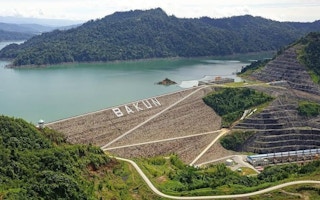Following the launch of its carbon market, Malaysian stock exchange-operator Bursa Malaysia has recently geared up for the introduction of a second product on its new Bursa Carbon Exchange (BCX): the Renewable Energy Certificate (REC). RECs are due to be traded on the BCX later this year.
A REC is a tradable financial instrument that represents the addition of a megawatt (MW) of renewable energy to the electricity grid. RECs are usually bought by electricity users who cannot access enough renewable energy directly, but still want ‘virtual’ renewable energy. Buyers might include large corporations who want renewable energy for their offices, manufacturers looking to shrink their carbon footprint, and environmentally conscious apartment dwellers who cannot install solar panels.
In December 2023, on the sidelines of the COP28 conference in Dubai, Bursa Malaysia, Sarawak Energy and two foreign partners signed a memorandum to explore the sale of RECs based on Sarawak Energy’s large-scale hydropower.
At first glance, this makes good business sense: Sarawak Energy has an abundance of inexpensive hydropower to sell, which Bursa could sell the certificates for to electricity users in Peninsular Malaysia, whose grid mainly relies on coal-fired power plants.
However, are hydropower RECs really providing the renewable and near-zero emissions energy that they claim?
Sarawak Energy’s three largest hydropower dams are at Bakun (2,500 MW), Baleh (1,285 MW under construction), and Murum (944 MW). While these dams produce cheap zero-emissions electricity, they rely on large reservoirs. The Murum reservoir covers an area of 245 square kilometres, Bakun holds 695 square kilometres and Baleh will have 588 square kilometres once completed. The total area of 1,528 square kilometres is more than twice the size of Singapore.
While hydropower turbines produce almost no emissions, the reservoirs that power them are a significant source of methane, a potent greenhouse gas. The amount of greenhouse gasses emitted by reservoirs depends on the volume of organic material (vegetation, peaty topsoil) that has been flooded.
Based on calculations by researchers from Universiti Tenaga Nasional, the Bakun reservoir alone emits 159.82 gigagrams (Gg) of methane annually, which is equivalent to 1.2 per cent of Malaysia’s reported 2019 greenhouse gas emissions of 330,000 Gg carbon dioxide equivalent (CO2e), excluding natural carbon sinks. The same study estimates that Malaysia-wide emissions from hydropower reservoirs is nearly 3 percent of national greenhouse gas emissions. This amount will likely increase to around 4 per cent once the Baleh reservoir is filled up.
Back-of-the envelope calculations suggest that electricity generated at Bakun has an emissions intensity of 230g CO2e per kilowatt hour. This is far higher than the near-zero emissions that are often attributed to hydropower, and similar to the emissions intensity of electricity generation from natural gas.
Aside from emissions, there are also concerns over biodiversity loss and the displacement of indigenous groups. By submerging 1,528 square kilometres of forest, vast natural ecosystems have been destroyed.
Forests play an important role in regulating the climate (humidity and temperature), act as natural carbon sinks, and especially to indigenous groups, provide food, clothing, housing and medicine. Malaysia’s Ministry of Natural Resources and Environment notes the importance of biodiversity for tourism, food security, forestry, and biotechnology, among others.
The construction of the Bakun dam displaced around 10,000 Indigenous people and the Murum dam around 1,500. For the Baleh dam, the media has not reported displacement of local populations.
Hydropower therefore has inherent environmental liabilities, which other renewable energy sources lack. Wind and solar are currently the main energy sources for RECs within Asean.
While not insignificant, the land use of solar energy compares favourably to large-scale hydropower like Bakun. The Bakun reservoir, at 695 square kilometres, likely produces around 48 gigawatt hours (GWh) per day. A similar area covered with solar panels can produce more than five times as much electricity, yielding approximately 278 GWh per day – 50 per cent of Malaysia’s daily electricity production.
Hydropower RECs therefore carry a number of risks, both for buyers and for the REC market as a whole.
Due to the hidden emissions from reservoirs, hydropower RECs will likely trade at a large discount to other RECs. Even if the market does not immediately recognize the environmental liabilities, they will eventually.
In early 2023, following investigative reporting, a number of rainforest carbon credits were shown to be worthless and were subsequently cancelled by their verification body. Such a scandal could also hit hydropower RECs with undisclosed reservoir emissions.
The carbon credit scandal was partly responsible for the subsequent market slump in voluntary carbon credits, as buyers lost trust in the instruments. In a similar way, hydropower RECs facing greenwashing allegations could harm the entire REC sector.
Dr. Pieter E. Stek is a Postdoctoral Scholar at the Asia School of Business in Kuala Lumpur.











